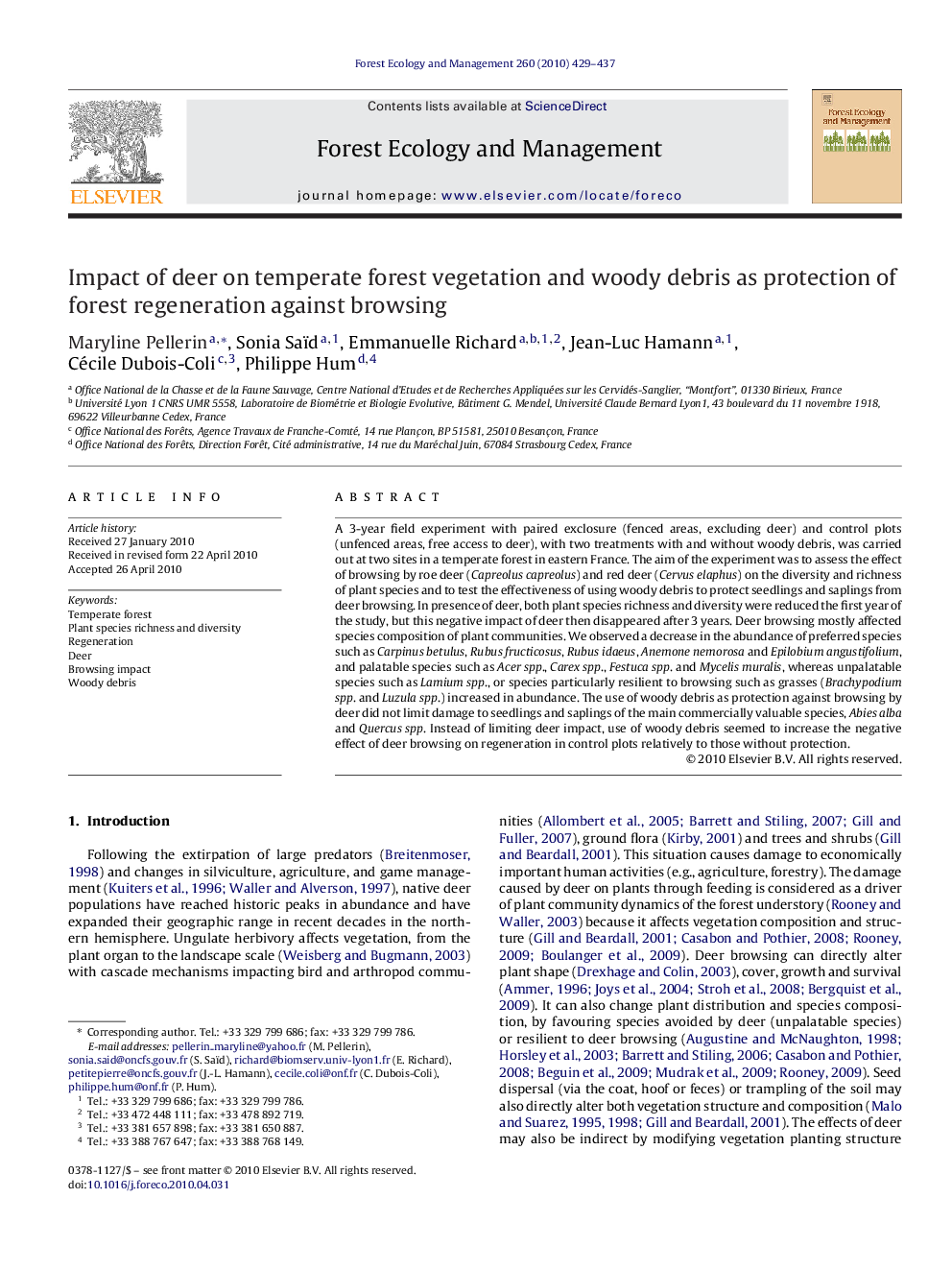| Article ID | Journal | Published Year | Pages | File Type |
|---|---|---|---|---|
| 87924 | Forest Ecology and Management | 2010 | 9 Pages |
A 3-year field experiment with paired exclosure (fenced areas, excluding deer) and control plots (unfenced areas, free access to deer), with two treatments with and without woody debris, was carried out at two sites in a temperate forest in eastern France. The aim of the experiment was to assess the effect of browsing by roe deer (Capreolus capreolus) and red deer (Cervus elaphus) on the diversity and richness of plant species and to test the effectiveness of using woody debris to protect seedlings and saplings from deer browsing. In presence of deer, both plant species richness and diversity were reduced the first year of the study, but this negative impact of deer then disappeared after 3 years. Deer browsing mostly affected species composition of plant communities. We observed a decrease in the abundance of preferred species such as Carpinus betulus, Rubus fructicosus, Rubus idaeus, Anemone nemorosa and Epilobium angustifolium, and palatable species such as Acer spp., Carex spp., Festuca spp. and Mycelis muralis, whereas unpalatable species such as Lamium spp., or species particularly resilient to browsing such as grasses (Brachypodium spp. and Luzula spp.) increased in abundance. The use of woody debris as protection against browsing by deer did not limit damage to seedlings and saplings of the main commercially valuable species, Abies alba and Quercus spp. Instead of limiting deer impact, use of woody debris seemed to increase the negative effect of deer browsing on regeneration in control plots relatively to those without protection.
